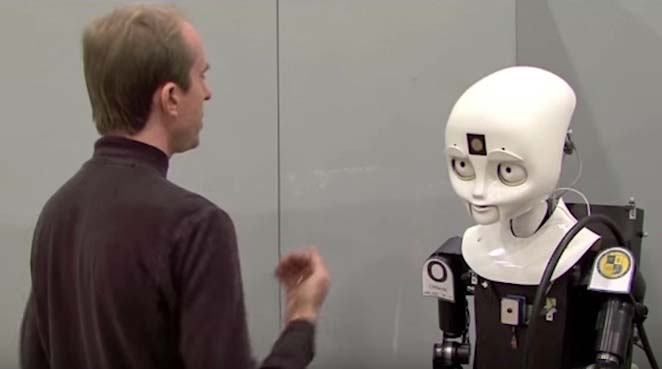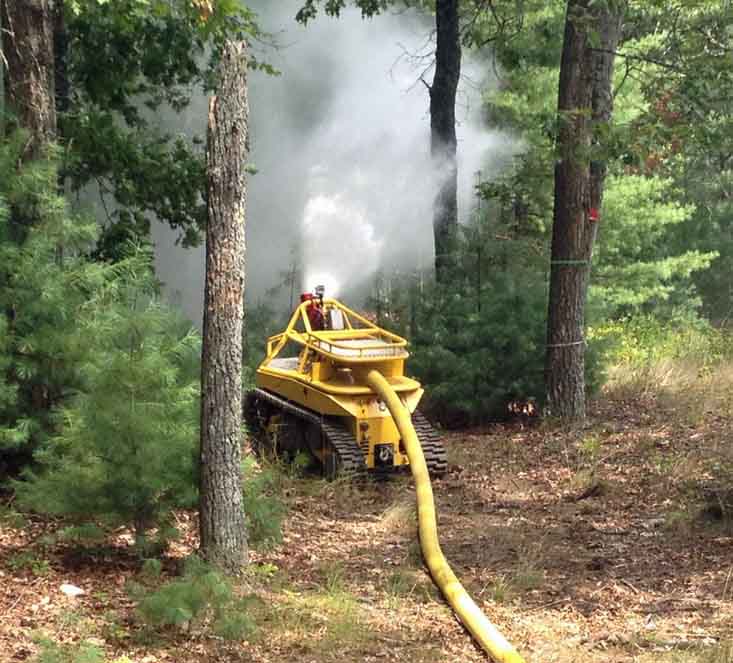
Will firefighting robots ever replace human firefighters? Not on a large scale in the near future, but there have been advances in technology in recent years that has resulted in them being used on actual fires. There is no question that they could be useful in certain types of incidents where the environment would be very dangerous for humans, such as hazardous materials, radioactivity, or a propane tank that could explode (or BLEVE).
Most of the firefighting robots in development or being used today are controlled remotely, are tethered by a fire hose which supplies water, and they have infrared and standard cameras which transmit images back to the operator.
The Thermite robot, pictured above, is small enough to be able to go through an average sized door in a structure. The video below features this machine.
Being used now in New South Wales, Australia is a much larger robot made in Germany, called a Turbine Aided Firefighting machine (TAF 20).
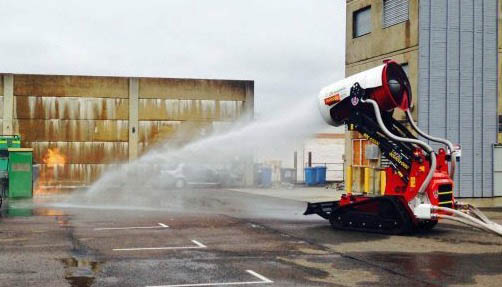
The $310,000 TAF 20 can spray water mist or foam from 60 meters (196 feet) and blast water up to 90 meters (295 feet). It was used last week at a factory fire in Sydney where NSW Emergency Services Minister David Elliot said it proved its effectiveness, according to ABC news.
“It will be of great use for our firefighters in battling other large and complex fires, including bushfires,” Mr Elliot said.
Lockheed Martin, which recently demonstrated a flying firefighting robot is also developing a ground-based machine they call the Fire Ox.
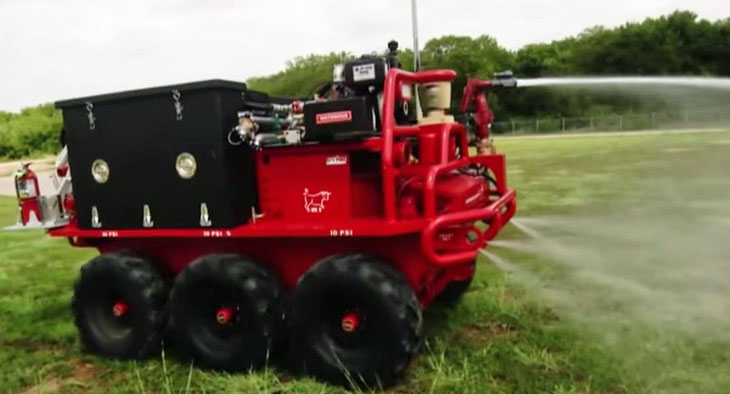
The Fire Ox is self-sufficient, in that it is not dependent on a tethered fire hose since it has an on-board water tank. It appears to be designed for wildland fires and haz-mat incidents. It can be operated with a game-style controller, programmed to follow a predetermined course, or can follow a person walking in front of it.
(UPDATE December 14: we found out today that the fire suppression package on the Fire Ox was built by BFX Fire Apparatus, one of our supporters.)
The U.S. Navy has been researching the use of robots to help deal with fires on board ships, the nightmare of sailors who are stuck on a vessel in the middle of the ocean.
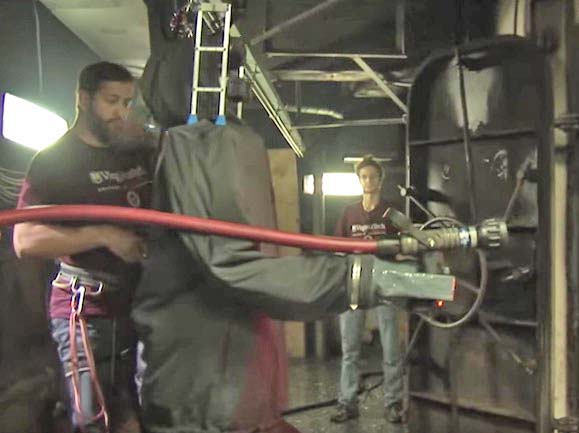
Their SAFFiR team is working on a humanoid robot that walks like a person and carries a fire hose. They are far from having a version that has anything like the mobility of a human, but they have made significant progress in recent years. One feature they are working on is to teach the machine to follow orders by interpreting and acting upon gestures.
